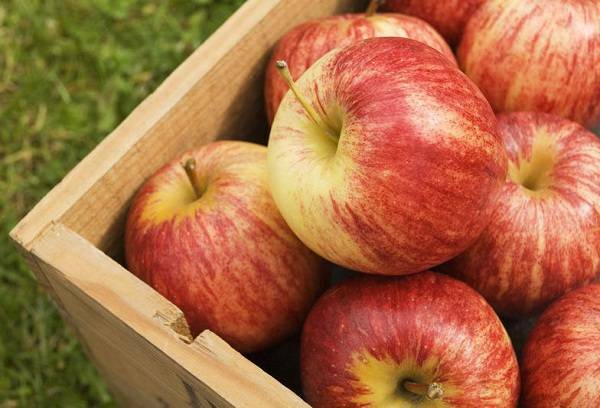 Tunisia is the most interesting country in North Africa. Local landscapes will not leave anyone indifferent. Narrow cobbled streets, planted on both sides with palm trees and eucalypts, small cafes and restaurants, and the friendly population attracts tens of thousands of tourists every year.
Tunisia is the most interesting country in North Africa. Local landscapes will not leave anyone indifferent. Narrow cobbled streets, planted on both sides with palm trees and eucalypts, small cafes and restaurants, and the friendly population attracts tens of thousands of tourists every year.
Today we will consider the top-5 of the main attractions of Tunisia .
Contents:
- Carthage
- Carthusian
- Crocodile Preserve
- Amphitheater of El Jema
- Kasb Fortress
- Sidi Bou Said
Carthage
 According to legend, Carthage was founded by the daughter of the ruler of Tire, Elissa, who fled to these parts because of the disagreements arising in her homeland due to the throne. Over time, the city grew and became one of the centers of the ancient world. Convenient location, powerful fortress walls, mighty army and navy turned Carthage into a powerful military power that challenged the greatest Roman Empire. As a result of three wars, known in history as Punic, the city was taken by the Romans and destroyed.
According to legend, Carthage was founded by the daughter of the ruler of Tire, Elissa, who fled to these parts because of the disagreements arising in her homeland due to the throne. Over time, the city grew and became one of the centers of the ancient world. Convenient location, powerful fortress walls, mighty army and navy turned Carthage into a powerful military power that challenged the greatest Roman Empire. As a result of three wars, known in history as Punic, the city was taken by the Romans and destroyed.

Today's Carthage with its lovely streets, seated with eucalyptus trees and palm trees, luxurious villas and magnificent gardens is one of the most popular tourist places in Tunisia. And only the ruins of the ancient city recall the once raging historical events.
The crocodile reserve
 Located on the island of Djerba, the crocodile nursery, is considered one of the largest in the Mediterranean region. All crocodiles contained here belong to the African breed and are brought here from the island of Madagascar. Unfortunately, outside the cattery in the wild nature of Africa, there are not so many crocodiles left. The reason for this is their magnificent expensive skin, which is very appreciated by fashion lovers in the West. However, in the reserve, the life of huge reptiles is safe. All conditions for their maintenance and reproduction are created here. The reserve is a successful commercial project and fully pays for itself, as annually hundreds of thousands of tourists from all over the world flock here to see these reptiles personally in their natural habitat. Special bridges have been erected for visitors, standing on which they can observe the daily life of toothy giants. If desired, guests can be photographed with crocodiles, and small crocodiles can even be held in his hand.
Located on the island of Djerba, the crocodile nursery, is considered one of the largest in the Mediterranean region. All crocodiles contained here belong to the African breed and are brought here from the island of Madagascar. Unfortunately, outside the cattery in the wild nature of Africa, there are not so many crocodiles left. The reason for this is their magnificent expensive skin, which is very appreciated by fashion lovers in the West. However, in the reserve, the life of huge reptiles is safe. All conditions for their maintenance and reproduction are created here. The reserve is a successful commercial project and fully pays for itself, as annually hundreds of thousands of tourists from all over the world flock here to see these reptiles personally in their natural habitat. Special bridges have been erected for visitors, standing on which they can observe the daily life of toothy giants. If desired, guests can be photographed with crocodiles, and small crocodiles can even be held in his hand.
Amphitheater of El Jema
 Situated 30 kilometers from the town of Mahdia, El-Djema Amphitheater is a historical monument dating back to the period of domination in these parts of the Roman Empire. The structure was erected on the orders of the Roman proconsul Marcus Aurelius Gordian, who, with the support of the local nobility, proclaimed himself emperor and declared independence from Rome. The Empire reacted quickly and harshly. Gordian managed to stay the emperor for a little more than a month. Arriving from Rome, the troops quickly suppressed the insurrection and brought order. And the construction of the amphitheater was no longer renewed.
Situated 30 kilometers from the town of Mahdia, El-Djema Amphitheater is a historical monument dating back to the period of domination in these parts of the Roman Empire. The structure was erected on the orders of the Roman proconsul Marcus Aurelius Gordian, who, with the support of the local nobility, proclaimed himself emperor and declared independence from Rome. The Empire reacted quickly and harshly. Gordian managed to stay the emperor for a little more than a month. Arriving from Rome, the troops quickly suppressed the insurrection and brought order. And the construction of the amphitheater was no longer renewed.
Presumably the amphitheater was supposed to accommodate about 40 thousand spectators. Its length is about 140 meters, and the width is more than 100 meters. Here you can clearly see the whole "infrastructure" of the bloody entertainment of Ancient Rome - seats for spectators, cages for animals, rooms for gladiators. .. The Amphitheater of El Jema is a clear indication of the senseless cruelty of human nature.
Kasb Fortress
 The fortress of Kasb, located in the ancient town of Soussa, is one of the few ancient fortifications that has survived to this day in almost original form. The structure is erected on the top of a low hill in the south-western part of the old town. The age of Kasbah is about a thousand years old. The most notable element of the fortress is the tower of Khalifa el-Fata. This tower at different times performed different functions - a defensive structure, observation post and even a lighthouse. The height of the tower is more than 30 meters. She got her name on behalf of a slave who was an overseer during her construction.
The fortress of Kasb, located in the ancient town of Soussa, is one of the few ancient fortifications that has survived to this day in almost original form. The structure is erected on the top of a low hill in the south-western part of the old town. The age of Kasbah is about a thousand years old. The most notable element of the fortress is the tower of Khalifa el-Fata. This tower at different times performed different functions - a defensive structure, observation post and even a lighthouse. The height of the tower is more than 30 meters. She got her name on behalf of a slave who was an overseer during her construction.
Inside the fortress are the archaeological museum of Sousse, which is the second largest museum in Tunisia. Here you can admire various objects of antiquity and the Middle Ages, mosaics and statues.
Sidi-B-Said
 The town is located on the shores of the Tunisian Gulf, not far from the capital of the country. It is named after the Islamic saint Abu Said, who is the founder of the city. For a long time Sidi-bu-Said performed various functions - the pirate harbor, the location of the Spanish Legion, the administrative capital of the province. At one time he was even one of the favorite places of European bohemia. Here flocked artists, writers and actors from all over the Old World.
The town is located on the shores of the Tunisian Gulf, not far from the capital of the country. It is named after the Islamic saint Abu Said, who is the founder of the city. For a long time Sidi-bu-Said performed various functions - the pirate harbor, the location of the Spanish Legion, the administrative capital of the province. At one time he was even one of the favorite places of European bohemia. Here flocked artists, writers and actors from all over the Old World.
The sights of today's Sidi Bou Said are first and foremost stunning views of the local harbor;secondly, the appearance of the town, which is a mixture of ancient Arab architecture with the European one.



